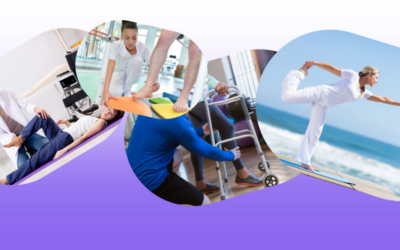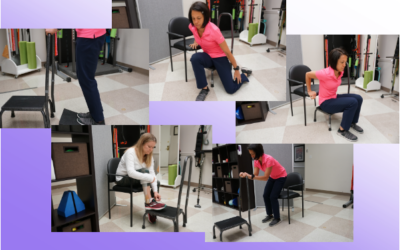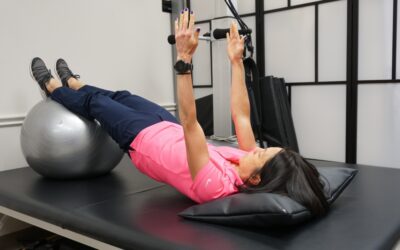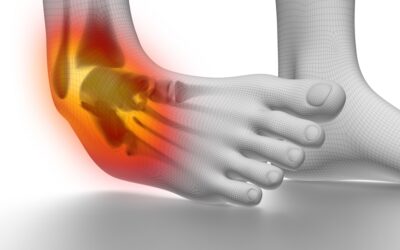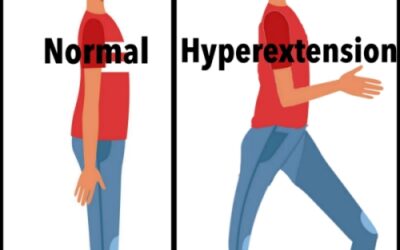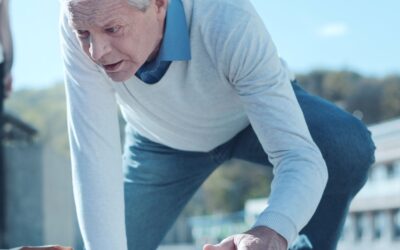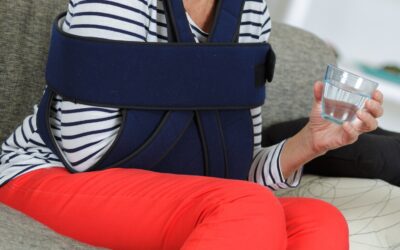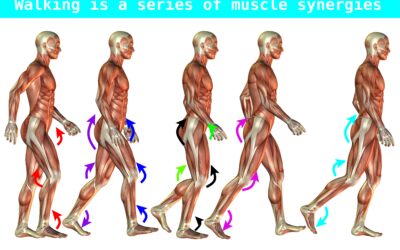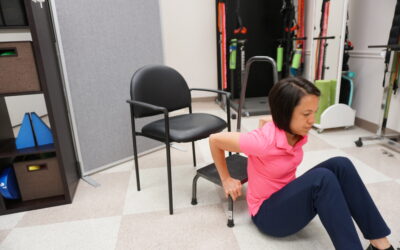The Missing Link in Stroke Rehab: Why Strength Isn’t Enough
How Plyometric Exercises Can Improve Your Post-Stroke Walking
Recovering from a stroke is a journey that takes patience, effort, and persistence. Maybe you’ve been faithfully following your rehab plan—doing strength training, stretching, and walking drills
You might be hitting milestones in therapy, like improving walking speed and distance, but something still feels off. You may still feel a lack of confidence, especially when facing uneven surfaces, crowded spaces, or unfamiliar surroundings.
If this resonates with you, let’s talk about what might be missing from your recovery plan: plyometric exercises.
What Happens After a Stroke
After a stroke, it’s common to lose strength in one side of your body. But what many people don’t realize is that stroke impacts more than just strength.
That makes sense — weakness is often the most visible deficit. You might think, “If I just keep building strength, I’ll get back to normal.”
But here’s the truth: Strength is just one piece of the puzzle. What’s often overlooked is that your muscles do a lot more than contract. There’s coordination, muscle timing, power, and reflexive responses involved in nearly every movement — from stepping over a curb to reacting when you trip. That’s why you may still feel unsteady, even after regaining some strength.
So, What Are Plyometrics? 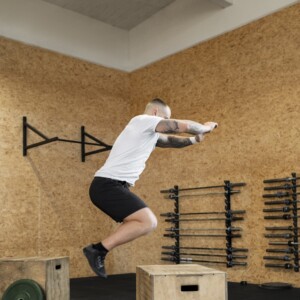
Plyometric exercises train muscles to contract quickly after being stretched. This is known as the stretch-shortening cycle. Think of a rubber band: when you stretch it and let it go, it snaps back fast. That’s what we want our muscles to do!
In real life, this ability helps you react quickly and efficiently — like catching yourself from falling or adjusting to uneven ground — without overthinking.
Plyometrics are often used with elite athletes to build power, coordination, and injury resilience. Now, they’re being explored more in older adults to reduce fall risk. Yet in stroke rehab, they’re still largely missing — and that’s a problem.
Why Plyometrics Are Often Left Out of Stroke Rehab
There are a few reasons:
- Limited research: There’s still very little formal evidence on the use of plyometrics after stroke, especially for those with significant mobility impairments.
- Limiting beliefs in healthcare: Many therapists assume their patients can’t do these exercises, so they don’t even try.
- Misinterpretation of studies: Some studies labeled as “plyometric” actually just used fast sit-to-stands — which aren’t true plyometric movements.
Despite the lack of published evidence, clinical experience and anecdotal success show that these exercises can dramatically improve balance, confidence, and real-world function in stroke survivors — when used appropriately.
How to Safely Introduce Plyometrics After Stroke
If you’re thinking, “There’s no way I could jump or bounce,” don’t worry — there are many ways to scale plyometric movements to fit your current ability level.
Here are a few ideas:
1. TheraBand Recoil Drill
Attach a resistance band above your leg. Let it pull your leg upward, then push it down fast. This mimics the quick stretch/shortening cycle without putting weight on the leg.
2. Mini Trampoline Oscillations
With support (like parallel bars or a therapist), stand on a mini trampoline and gently bounce up and down — not jumping, just allowing your knees and ankles to absorb and release energy. This teaches coordination between the ankle, knee, and hip.
3. Assisted Pogo Jumps
Using a TheraBand for support, perform small jumps in place. You can start double-legged, then progress to staggered or single-leg positions for more challenge.
These movements not only improve muscle reaction time and coordination, but they also help rebuild the synergies between muscles — making movement more automatic and efficient.
⚠️ Important Note: Always do these exercises under the guidance of a trained therapist who understands how to scale movement based on your current mobility. Safety comes first.
Do You Need a Neurologic Physical Therapist?
Not necessarily.
In fact, some orthopedic physical therapists — especially those experienced with athletes or diverse age groups — may be more open to incorporating creative approaches like plyometrics. The key is finding someone willing to think outside the box and tailor therapy to your goals and abilities.
One Frustrating Example From Research
I recently found a 2025 study that seemed to confirm everything I’ve seen in practice. The conclusion supported the benefits of plyometrics in stroke recovery. Excited, I dove into the full article…
Only to find that the intervention wasn’t plyometric at all — it was just fast sit-to-stands. That’s not the same as tapping into the stretch-shortening cycle.
This highlights a bigger issue: Even peer-reviewed studies can miss the mark, and clinicians (and patients) often rely on conclusions without digging into the details.
Moral of the story: Ask for sources. Read studies for yourself. Understand whether the intervention tested applies to your situation.
Final Thoughts
Here are the 2 key takeaways:
- Plyometric exercises could be a critical missing link in stroke rehab — helping you move with more confidence, react faster, and reduce your fall risk.
- Your therapist’s beliefs matter. Don’t be afraid to ask questions, challenge assumptions, and seek care that aligns with your goals.
You have more potential than you’ve been told.
If you’ve had success (or struggles) with integrating advanced exercises like these into your rehab, I’d love to hear about it. Share your experience in the comments below — let’s build a stronger, more informed rehab community together.
Articles you may be interested in
Brunnstrom Stages of Motor Recovery
The Brunnstrom stages of stroke recovery is one proposed model of how someone with hemiplegia will recover movement. It was developed by a physical therapist in the 1960s and proposes that this sequence of recovery falls into six loosely defined stages. The main...
Sunshine
Sunshine Can you see it? You know, that ball of fire in the sky that rises in the morning and goes to sleep at night? Ok, maybe not literally. I mean, they do tell us not to look directly at that thing. However, figuratively speaking, are you someone who is finding...
Product Spotlight: A step stool with handle
A step stool with a handle is one of the most seems like an odd piece of "rehab equipment", however, it is truly "worth its weight in gold". It is probably the one itemI can honestly say I use multiple times a day in my clinic. And, rarely as an actual step stool....
Gym Ball Exercise Routine for Better Balance
A Gym ball exercise routine is a great way to improve your balance. If provided with the correct exercises, they can challenge almost every "problem area" for a stroke survivor. The main areas that are problematic after a stroke are steadiness, symmetry, and dynamic...
Spastic ankle guide to stretching
Stretching a spastic ankle is critical to improve standing and walking. However, stretching a spastic ankle can also be extremely challenging. Add to that, NOT stretching a spastic ankle and you are at risk for making it worse. Ugh..... All that being said, never...
Knee Hyperextension after a Stroke: Causes and Treatment
What is Knee Hyperextension after a Stroke? Knee hyperextension is a common problem after a stroke. Knee hyperextension is when the knee goes beyond a straight position. Yeah, not exactly natural looking or feeling. ? Knee hyperextension (recurvatum) usually happens...
Balance Problems After a Stroke
Balance is an even distribution of weight within a base to maintain an upright position. Balance problems are very common after a stroke. Balance is a critical part of almost all of our daily activities. Lack of balance confidence can elicit fear and anxiety. More...
Does Constraint Induced Movement Therapy Improve Arm Recovery?
Hemiplegia (weakness on one side of the body) can be a huge cause of disability following a stroke. This can make activities such as grasping, reaching, and manipulating objects difficult, if not impossible. Constraint Induced Movement Therapy has been well...
What is a muscle synergy?
In the world of neurologic movement disorders, we talk a lot about "abnormal synergy patterns". And they kind of "get a bad rap" in how they can inhibit motor (movement) recovery. But functional muscle synergies are not necessarily a bad thing. Here we are going to...
Getting up after a fall
Falling can be a scary thing. Getting up from the floor after a fall is the number one most important skill to learn. Safety Warning: Check in with your body before moving It is important to note, you should only attempt to get up if you are not injured for...


